Pelvic Floor & Core Support Garments
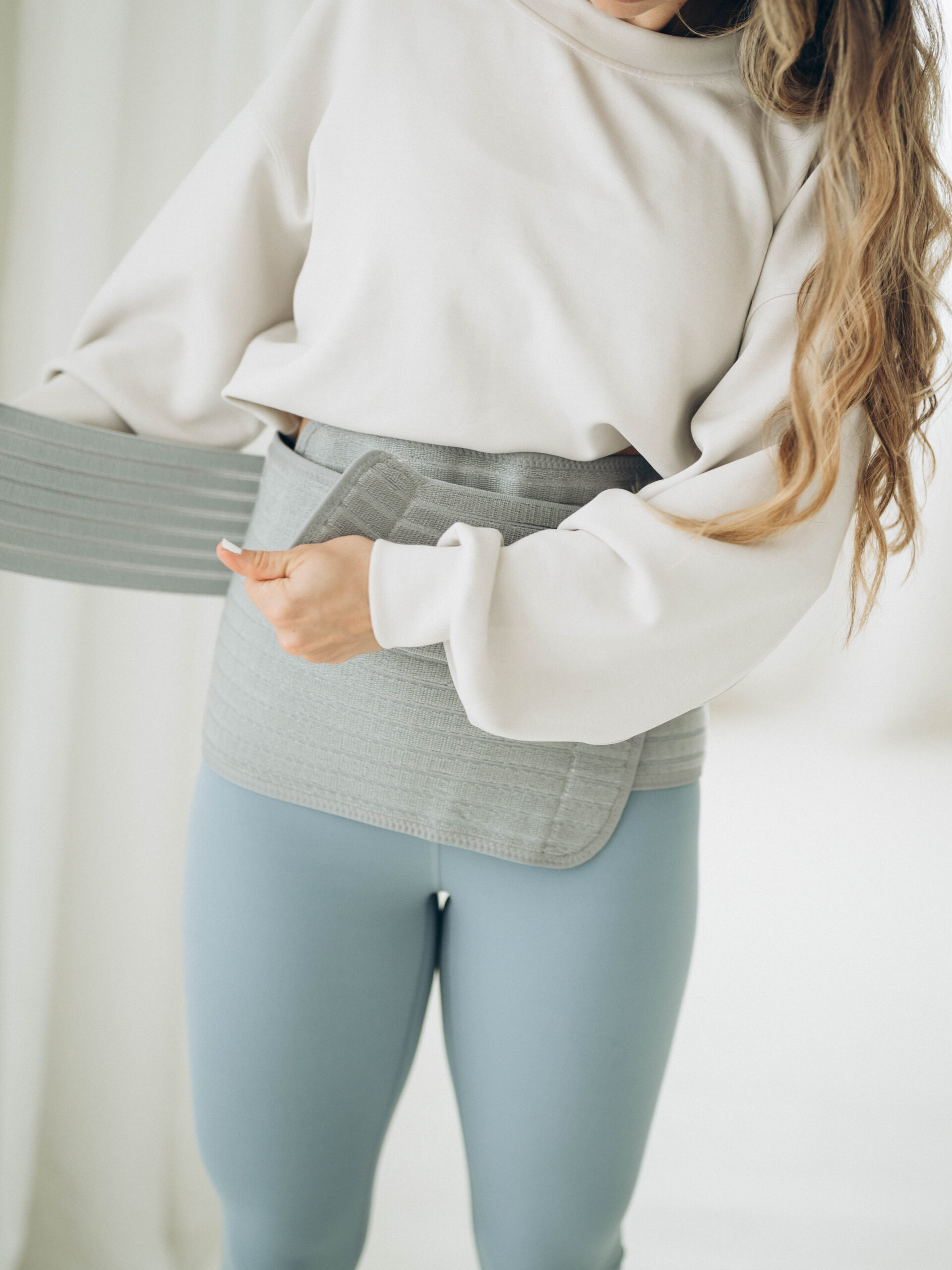
Disclosure: I only recommend products I would use myself and all opinions expressed here are our own. This post may contain affiliate links that at no additional cost to you, I may earn a small commission.
Whether you are pregnant and suffering from vulvar varicosities or postpartum and struggling with SI joint pain, you may have found yourself googling “belly band” or “SI belt” or “pelvic floor support underwear” at some point during your journey through motherhood. And some of those results may have felt overwhelming because there are just SO MANY options – but you want to make sure the support garment you choose is helpful for your symptoms and does not cause any further harm to your pelvic floor or core. That’s where I come in as a pelvic floor physical therapist. Today I’m breaking down everything you need to know about support wear and reviewing a few of my favorites.
When is support needed?
Pregnancy
During pregnancy your body is constantly experiencing change from your growing uterus, your increasing blood volume and your lengthening abdominals – just to mention a few.
All of these changes during pregnancy can lead to increased vulvar swelling, increased pelvic heaviness and weakened abdominals. But do not fear, these are all common changes you may experience during pregnancy and there are tons of options for treatment and pain relief, including some support wear.
Here is a list of common dysfunctions that can benefit from support garments during pregnancy:
- Vulvar varicosities
- Round ligament pain aka lightning crotch
- Symphysis pubis dysfunction
- SI joint dysfunction
- Pelvic heaviness or prolapse
- Low back pain
Please note, if you are experiencing any of these dysfunctions I highly recommend scheduling an appointment with a pelvic floor physical therapist or consider following an online prenatal program to focus on appropriate strength and mobility work in addition to wearing a support garment.
Postpartum and beyond
Now you may think that after delivering your baby that you will be free of any aches and pains that you experienced during pregnancy, but unfortunately that is not always the case.
For example, if you were experiencing SI joint pain during pregnancy due to weakened hip musculature, and never addressed the weakness during pregnancy, then it will likely continue postpartum to some extent.
I also highly recommend pelvic floor and/or core support wear after delivery regardless of your mode of delivery just to provide a little extra TLC to your body – I promise you will not regret it. I basically LIVED in my Support Bloomers from Bao Bei after my vaginal delivery with Ava even though it was a relatively smooth delivery to help with swelling, abdominal support and pelvic floor support.
Here are some common reasons to wear pelvic floor and/or core support postpartum:
- Post vaginal delivery
- Post cesarean delivery
- Symphysis pubis dysfunction (SPD)
- SI joint dysfunction
- Pelvic heaviness or prolapse
And just like during pregnancy, I highly recommend scheduling an appointment with a pelvic floor physical therapist or consider following an online postpartum rehab program to focus on recovering, reconnecting and rebuilding your pelvic floor, core and full body strength postpartum. The old advice of “just take it easy” and “you’re cleared after 6 weeks” just isn’t cutting it anymore. Postpartum pelvic floor rehab should be standard of care after all deliveries – and that is a hill I’m ready to die on!
Non-pregnancy related
Did you know that you can still experience pelvic floor dysfunctions even if you have never had a child? Many of the women I work with in my clinic in Nashville have never had children and are still experiencing prolapse, urinary incontinence, diastasis recti, and SI joint dysfunction.
While many of these symptoms are common during pregnancy and postpartum due to your body’s changes, they are not isolated to the peri-natal population. All women have pelvic floors (and men too!) and therefore all women can experience pelvic floor dysfunctions. So if this is you, please don’t be afraid to reach out to a pelvic floor therapist – we can help women of all ages and through all stages of life.
Here are some common non-pregnancy related reasons to wear pelvic floor and/or core support:
- Symphysis pubis dysfunction (SPD)
- SI joint dysfunction
- Pelvic heaviness or prolapse
If you need help finding a pelvic floor therapist, use this directory to find one! If you’re nervous or unsure about scheduling an appointment, read this post about what to expect at your first pelvic floor therapy appointment.
How long should you wear it for?
Now, before you purchase your belly band or compression underwear, it is important to recognize that these support garments are NOT meant to replace your own muscle. They are simply meant to assist your muscles during periods of acute pain with the goal of getting rid of the support garment and relying on your own muscles instead.
As a pelvic floor physical therapist, my goal for my patients is to get to the root cause of your pelvic floor or core dysfunction and address your symptoms through corrective exercise and appropriate workout programming. This means that support garments are NOT the long-term solution, but rather a short-term assistive device to help you through acute pain.
So how long can you wear your support garment throughout the day?
Many of the products listed below will note that you can wear your pelvic floor or abdominal support garments 24/7 (with the exception of bathing), but I advise my patients a little differently based on their symptoms and intended use of the product.
A good rule of thumb is to wear your support garments during times of acute pain or increased symptoms. For example, if you are experience SI joint pain consistently while walking your dog for longer than 2 miles, then I would recommend to apply your SI belt after 2 miles – and remember, you should ALSO be working with a pelvic floor therapist to eventually rebuild your own strength and mobility to decrease your need for external assistance.
Still a little confused on how long to wear your specific support garment? Don’t worry, I have included sections on “what they help” and “recommended wear time” for each of the below support garments.
Signs your support garment is too tight
One of the biggest points of caution to note when wearing a support garment is tightness.
Frequently you may see on the internet women wearing abdominal binders to help “heal” their diastasis or “shrink their waist” and I want to emphasize that this is NOT the intended purpose of these support garments.
I do not recommend wearing them as tight as possible. If you wear some of these garments too tight then you run the risk of increasing pressure down onto your pelvic floor contributing to prolapse or other pelvic floor dysfunctions – the very ones you are trying to prevent and support!
Signs your garment is too tight:
- Increased pelvic pressure
- Inability to take a full, deep breath
- Numbness or tingling in your legs or hips
Please, please, please make sure you can see your ribcage move as your breathe in and out while wearing any of the belly bands or abdominal binders. You should be able to see your ribcage and belly expand as you breathe without restriction.
Additionally, I recommend watching this reel I filmed on proper placement with abdominal binders to ensure you are not wearing it too high which can also contribute to unwanted pelvic pressure.
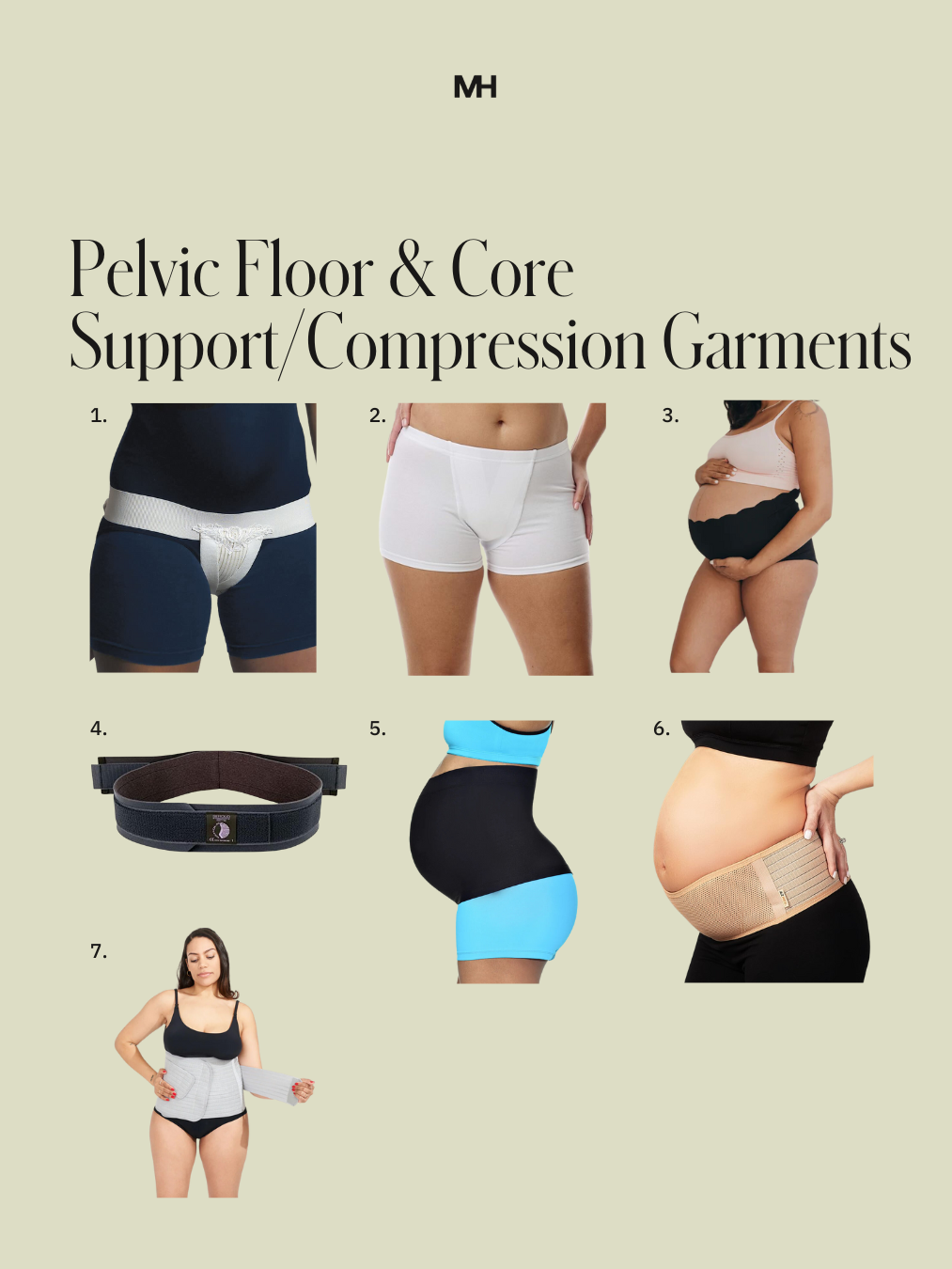
Support for your pelvic floor
1. Pelvic Support Belt

V2 – While this support garment may look funky, it is beyond helpful if you are experiencing any vulvar swelling or prolapse symptoms. It can be difficult to adjust and requires some trial and error with clothing choice to hide the seams, but many of my patients have absolutely loved the V2.
What it helps:
- Vulvar swelling
- Pelvic heaviness/prolapse
- Symphysis pubis dysfunction (SPD)
Recommended wear time:
- I recommend only wearing it while you are experiencing symptoms or anticipate experiencing symptoms such as standing for prolonged periods of time at work.
2. Boxer Briefs
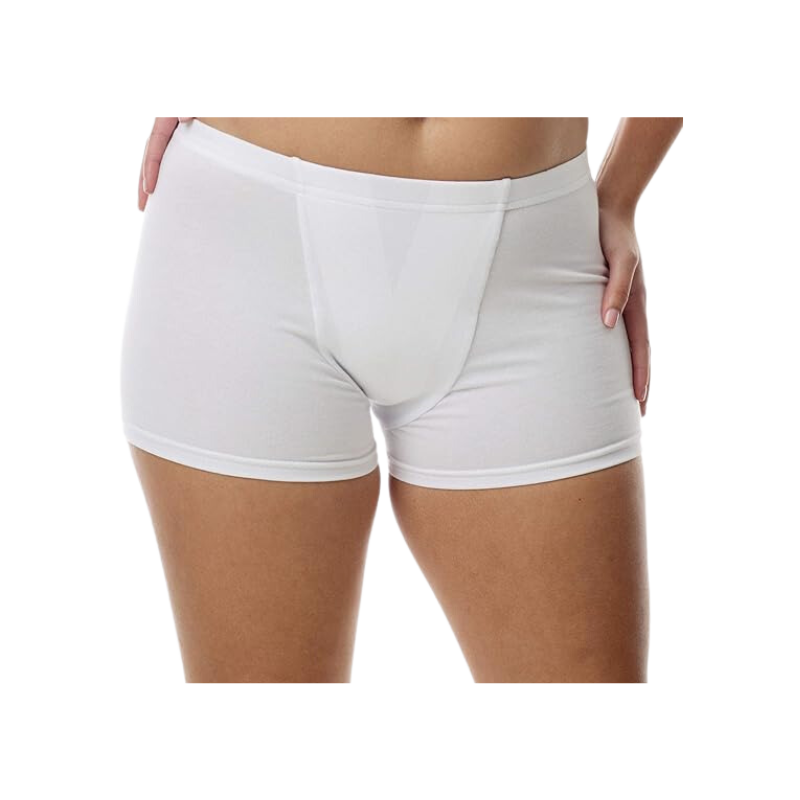
Boxer Briefs – I recently ordered a pair of these to test myself and WOW I was absolutely amazed at the support they provide. The fact that the support is built into a brief makes it much easier to hide the garment under clothing and not worry about the garment falling down. Highly recommend this one.
What it helps:
- Vulvar swelling
- Pelvic heaviness/prolapse
Recommended wear time:
- I recommend only wearing it while you are experiencing symptoms or anticipate experiencing symptoms such as standing for prolonged periods of time at work.
3. Support Bloomers
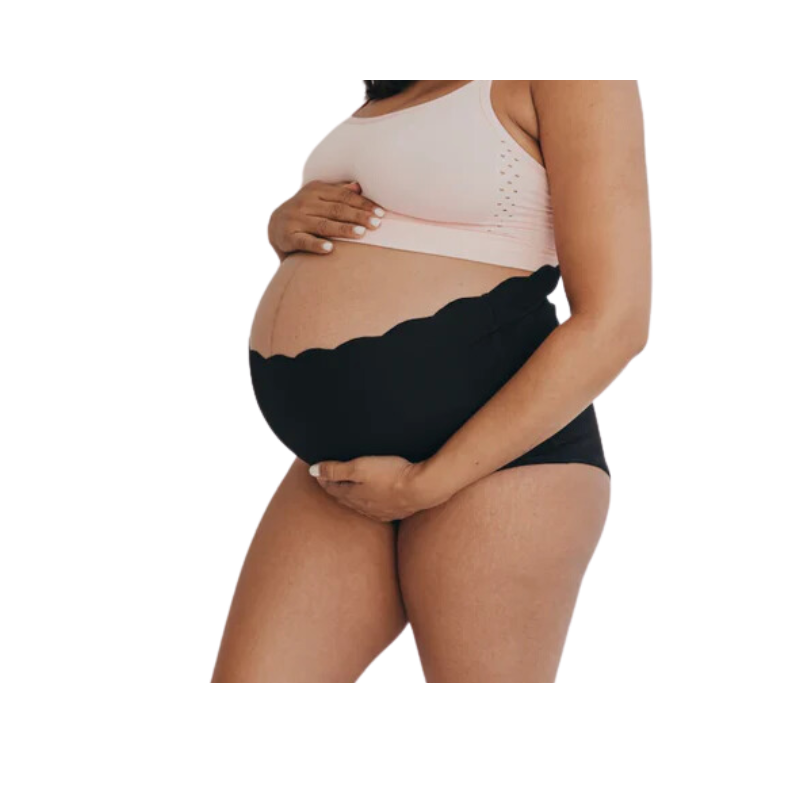
Bao Bei Support Bloomers – As mentioned above, I LIVED in these support bloomers after my vaginal delivery for the first 6 weeks and continued to wear them as needed for another month. These bloomers provide pelvic floor and abdominal support through gentle compression from the bottom up which is why I love them for vaginal deliveries and pelvic floor support.
Use code: drmaehughes for 15% your order!
What it helps:
- Vulvar swelling
- Pelvic heaviness
- Abdominal weakness
Recommended wear time:
- Because they bloomers lift from the pelvic floor up and are gentle in their compression, you can wear them 24/7 (except bathing) while you are recovering postpartum or experiencing symptoms whether you are pregnant or not.
4. SI Belt
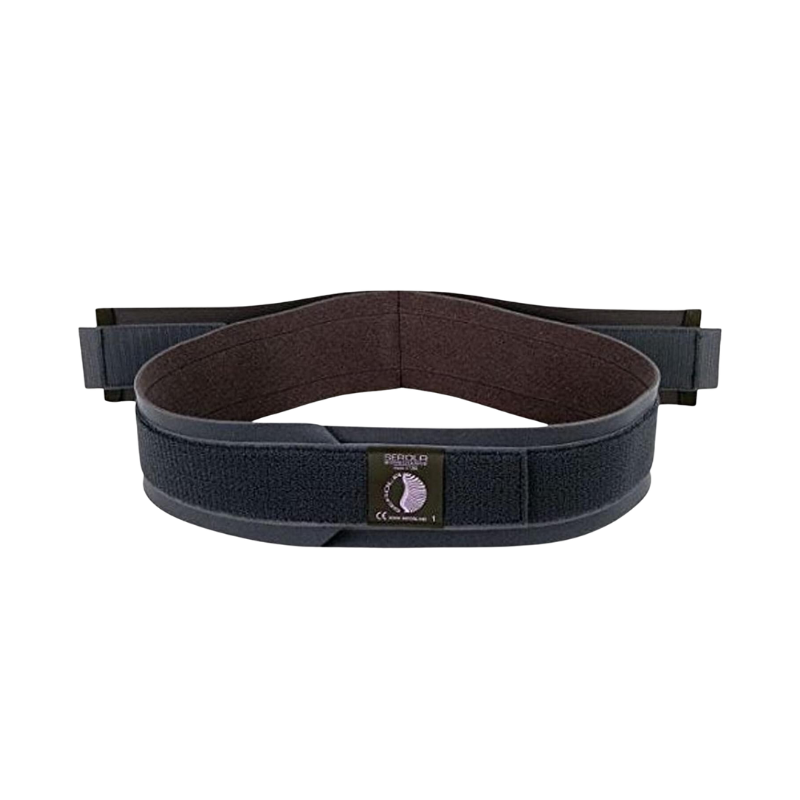
Serola SI Belt – This SI belt is the gold standard for all SI belts and is used all across the country by MDs and PTs alike.
What it helps:
- SI joint dysfunction
- Pelvic girdle pain
- Low back pain
Recommended wear time:
- The goal is to only wear the belt while you are experiencing symptoms or anticipate experiencing symptoms, and then remove the belt when symptoms resolve or when the activity has ended.
Support for your core
5. Belly Band – cloth, full coverage
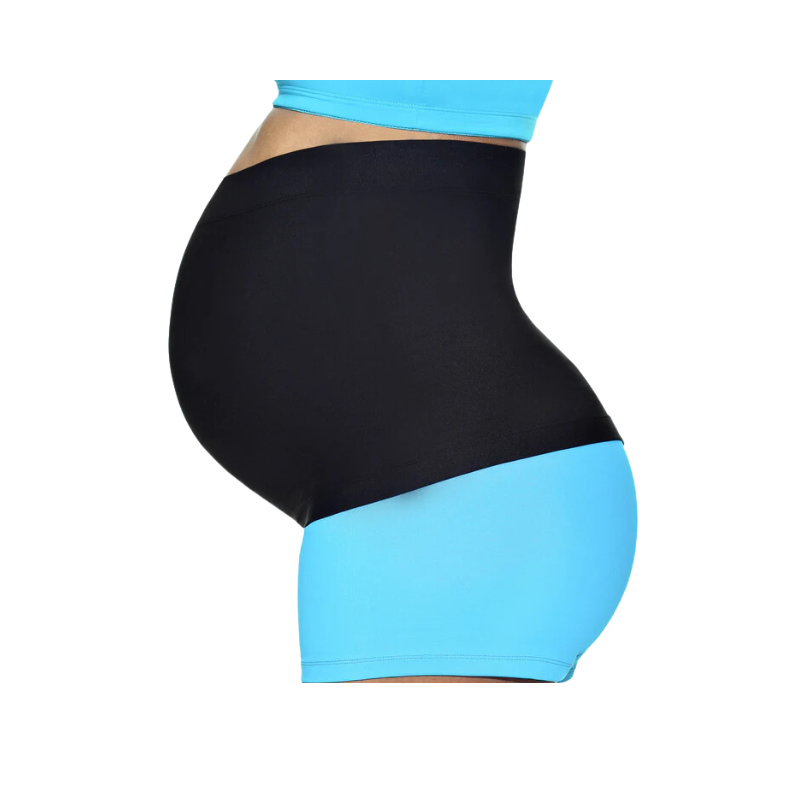
Bao Bei Belly Band – I love this full coverage belly band because of its gentle compression without any velcro use making it easy to wear under your clothes, during a workout or while sitting at work.
Use code: drmaehughes for 15% your order!
What it helps:
- Low back pain during pregnancy
- Round ligament pain during pregnancy
- Symphysis pubis dysfunction during pregnancy
- Pelvic girdle pain during pregnancy
- Rib pain during pregnancy
Recommended wear time:
- Because this belly band is of a soft material with gentle compression, you can wear it 24/7 (except bathing), but I do still recommend trying to only wear it when symptoms arise.
6. Belly Band – velcro, belt style
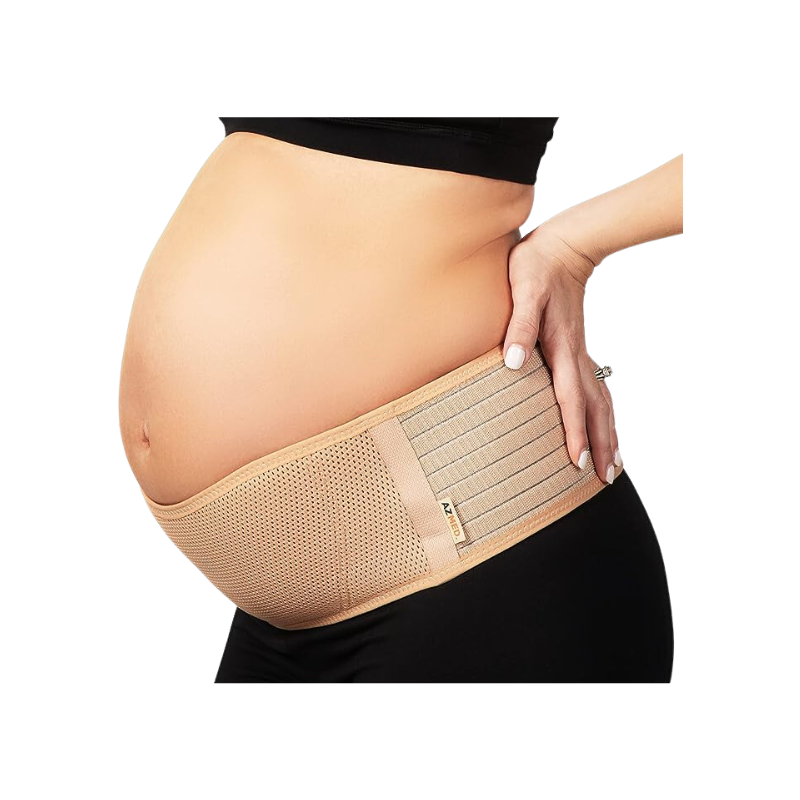
Belly Band – This belly band is probably the most common one you may see women wear during pregnancy. Make sure you place it low enough under your belly to avoid abdominal compression. It is often helpful to secure it around your hips while you are lying flat on your back to ensure proper placement. While this band is helpful, it can be difficult to wear while working out or sitting.
What it helps:
- Low back pain during pregnancy
- Round ligament pain during pregnancy
- Symphysis pubis dysfunction during pregnancy
- Pelvic girdle pain during pregnancy
Recommended wear time:
- I recommend only wearing it when symptoms arise or during occasions when symptoms are anticipated.
7. Abdominal Binder
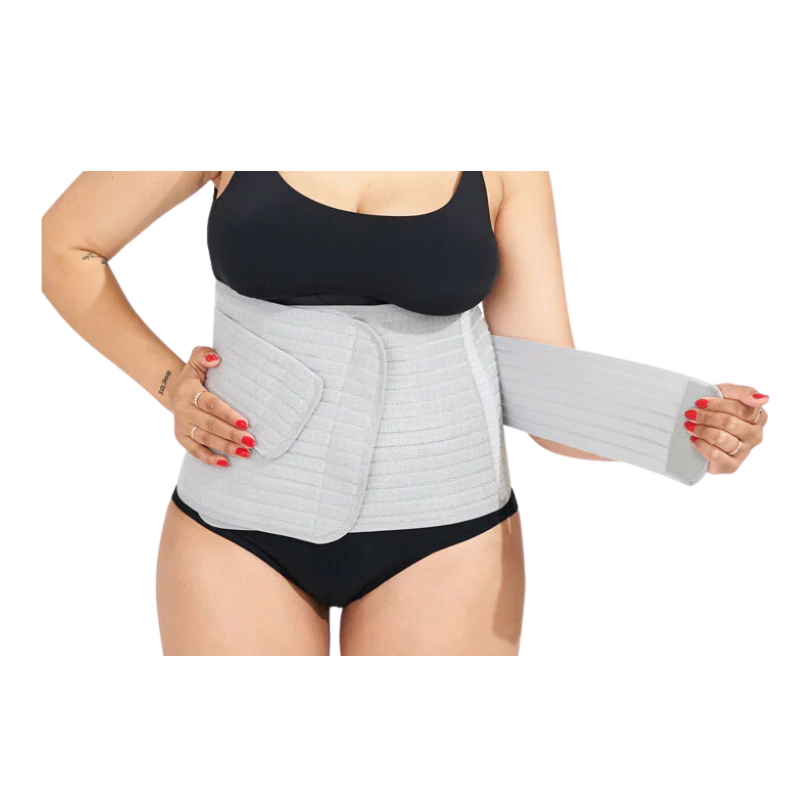
Bodily Abdominal Binder – If I could gift this abdominal binder to every single woman post cesarean delivery I would. Many hospitals will provide you with an abdominal binder upon request after a cesarean delivery, but the quality of this binder is FAR superior.
What it helps:
- Abdominal weakness post cesarean delivery
- Abdominal weakness post vaginal delivery
Recommended wear time:
- I recommend wearing this binder as often as needed during the first 2-4 weeks post delivery with the goal of discontinued use by 6-8 weeks postpartum. Do not bathe with this binder.
Additional support for your pelvic floor and core
Remember, the goal with any of these pelvic floor and core support garments is to provide gentle assistance while continuing to address the root cause of your symptoms through working with a pelvic floor physical or occupational therapist.
And if accessibility, affordability and time are barriers to working with a pelvic floor therapist in-person, then I have created rehab and fitness programs for you to complete from the comfort of your own home.
My Movement Through Pregnancy program provides you with 4 workouts per week focusing on strengthening your full body and preventing pelvic floor and core dysfunction throughout your pregnancy. My Movement Through Early Postpartum program provides you with 12 levels of pelvic floor, core and full body rehab to return you to strength training and an active lifestyle. You should not and do not have to live with these symptoms forever!
Is the bodily abdominal binder ok to use lost vaginal delivery with prolapse? Worried about too much pressure.
Hello! The main concern when using any abdominal binder is putting it on too low and too tight which can cause pelvic floor dysfunctions. If you have concerns about that then I would highly recommend the Support Bloomers from BaoBei that I have linked in the post! They provide more gentle compression from the pelvic floor up to help with pelvic heaviness.
Hi! I had twins in January and was verrrry stretched – delivered at 37+5. I had an unplanned cesarean after a long labor and I’m now 6mo PP and I still have a distended belly even though I’ve been doing PFPT and my diastasis is closing – around 1 finger now from 3. I had an exam that determined that my uterus has contracted so the issue is that my tissues have stretched so much that my uterus and intestines fall forward with gravity and cause the distention. PT and OB have recommended wearing a support garment to keep gravity from making things worse while my soft tissue tightens back up. I can’t find anything comfortable to wear all day! Help?
Hii, I am an older woman with cystocele and rectocle. I had surgery 5 years ago and the cystocele is still good but the rectocele is back. I have had trouble going to the bathroom and have been wearing a Bracebiility belt but it seems tight lately. Can you recommend a good support belt for rectocele. I have been doing pelvic floor physical therapy online as the providers here are very booked up. Thanks so much for your help. Any braces stores you know in Massachusetts?